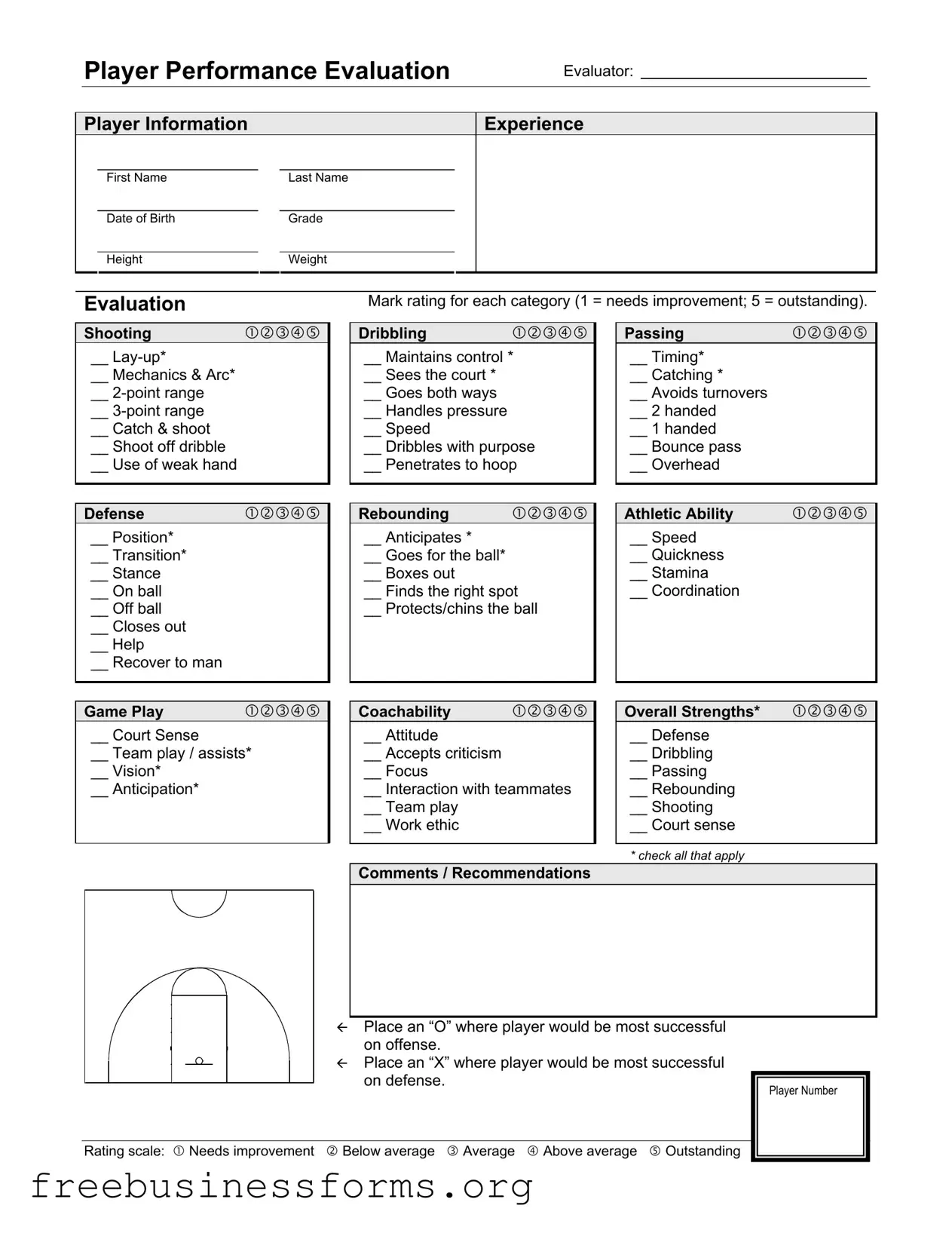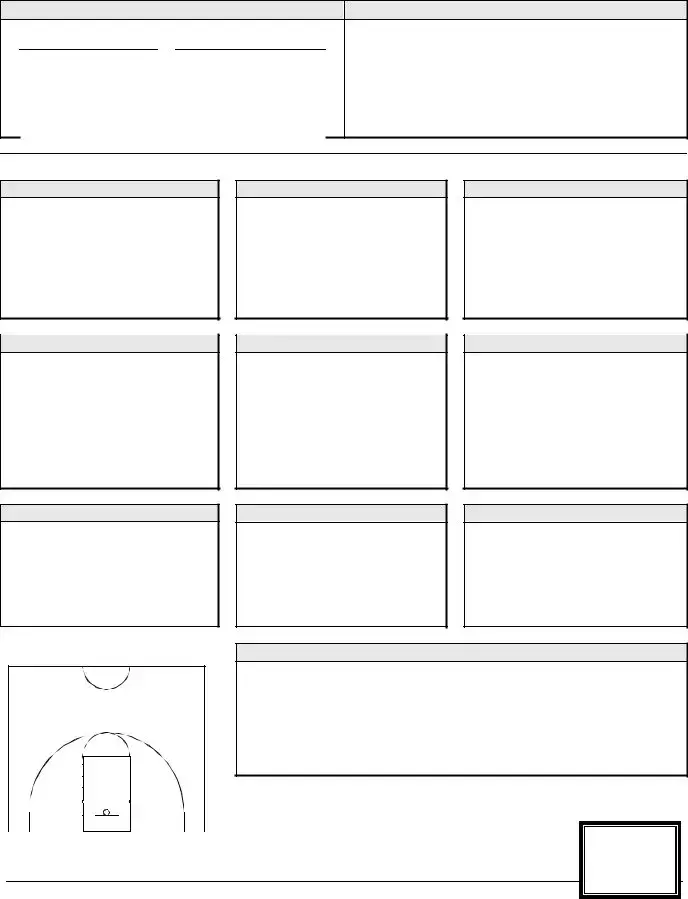Official Basketball Evaluation Form in PDF
The Basketball Evaluation Form is a structured tool designed to assess a player's skills and performance across various categories, including shooting, defense, and athletic ability. This form allows evaluators to provide a comprehensive overview of a player's strengths and areas for improvement, facilitating targeted coaching and development. By utilizing a standardized rating system, coaches can effectively track player progress and make informed decisions regarding training and gameplay strategies.
Open Form Here

